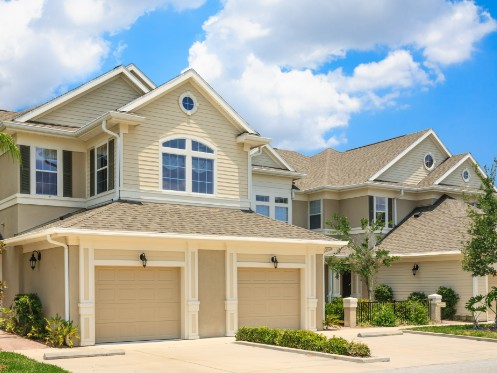If you’ve purchased a home in the past, you know that home inspections are a vital part of the home-buying process. Usually completed after a buyer has put an offer on a home, but before closing, home inspections help buyers identify any major issues before the purchase is finalized and can give a clearer picture of the true value of a home. Knowing about any home defects can help either negotiate the price or allow sellers to correct the defect before the sale.
While a home inspection covers a myriad of details inside and outside the home, there are some specific issues that homeowners and buyers can be on the lookout for during home inspections.
Electrical Issues
Some of the common electrical problems that can show up during a home inspection include misaligned or improperly installed wires, frayed installation, or outdated electrical panel boxes. Many of these have to do with the age of the home, so if you’re a buyer looking at a home more than 20 or 30 years old, it’s an especially good idea to ask your home inspector about these problems.
Electrical issues are not just a nuisance – they’re a high-risk safety concern. According to the Electrical Safety Foundation, faulty electrical systems cause 51,000 house fires per year. It’s essential to find out about and address electrical issues as soon as you’re aware of them.
Plumbing Issues
One caveat to plumbing issues specifically is that one issue can often cause a domino effect if it’s not treated promptly. If a home inspector finds that there are multiple plumbing issues, they may recommend that you hire a plumber to do a more detailed investigation into the problems.
The most common plumbing issues that arise include slow drainage, leaking faucets, defective piping, cross-connection issues, and low water pressure. While many of these seem small, if they’ve gone untreated for too long, they can cause flooding, mold, warped flooring or cabinetry, and more. The best thing you can do for your peace of mind is to hire an expert who can give you a detailed report of any plumbing issues and the best way to address them.
Foundational Issues
Problems with the foundation of a home can be daunting. After all, the structural integrity of your home may be at risk, and cracks or gaps can open the door to a host of other problems. However, it’s worth noting that it is possible to have “minor” foundational issues, so make sure you speak with a trusted inspector who understands the implications of such problems.
Specific foundational issues that home inspectors may look for include cracks or gaps in the foundation, sagging or bowing floors, stuck windows and doors, or moisture. Depending on the extent of the issues and how simple they are to repair, foundational concerns can significantly decrease the value of a home. Major problems can easily exceed $10,000 in repairs.
Mold
Mold formation in a home can be a major health hazard, and because it is difficult to detect, it can go undiscovered for long periods of time. Home inspectors are well-versed in where mold tends to grow and what smaller symptoms can be a sign of its presence.
If they do find mold formation, you’ll want to have it removed by a professional immediately, as it can cause significant issues like respiratory issues, headaches, poor sleep, depression, and more. Depending on the method used for remediation and the square footage of the area that needs to be treated, mold removal can cost anywhere from $125 to more than $30,000 for an entire home. As a point of reference, homeowners of a 2,000-square-foot home can expect to pay an average of $5,000 for whole-home mold removal.
Poor Drainage
Poor drainage around the home can affect your foundation and cause other issues such as mold, soil erosion, flooding, and water damage. When the home inspector surveys the home, they’ll look specifically for things like standing water or moisture (especially in areas like crawl spaces or basements), as well as check features of the home like gutters and downspouts to make sure they’re functioning correctly and installed in proper locations.
Small issues may be fixed with simple additions to help drain away water, but major concerns can significantly devalue a home.
Faulty Heaters
Heating and cooling are essential to your home’s comfort. A faulty system – whether it be forced air with a furnace or heat pump, or radiant heating with a hot water heater – can significantly impact the value of the home.
Specific signs of a faulty heating system include hot or cold spots throughout the home, unusual noises, a furnace burner flame that’s the wrong color (a healthy flame should be blue), and short cycling. Not all of these issues are major, and you may very well be able to repair them on a budget. But more significant issues could require replacing the heating system altogether, which can cost upwards of $7,000 in some cases.
Faulty Air Conditioning Systems
Air conditioning systems vary widely in efficiency, size, capacity, and more. Many new systems even include smart home connections that allow you to program automations from your phone. With that said, the cost of repair or replacement can be difficult to quantify. And ultimately, it depends on the type of AC issue that the home inspector finds.
Most commonly, problems with an AC system have to do with worn down mechanical components, filters that need to be replaced, refrigerant leaks, insufficient ductwork, and improper drainage (just to name a few!). In some cases, the AC may be able to be fixed with a simple tune-up by a professional. To replace it, the average cost in the U.S. can run homeowners anywhere between $5,000-$10,000.
Inadequate Insulation
Insulation is not only an important part of maintaining the comfort in your home; it also largely affects your utility bills. A poorly insulated home can lead to your heating or cooling system running virtually continuously, causing your energy costs to skyrocket.
The cost to remediate this problem can vary depending on the type of insulation. The removal and replacement cost together costs anywhere from $2.50-$8 per square foot, with blanket batts and rolls being the cheapest option and spray foam being the most costly. On average, a homeowners of a 2,000-square-foot home can expect to pay between $3,000-$10,000.
Roof Damage
Roofing is one of the most important structural features of the home. A faulty one is not just a nuisance – it can temporarily put you out of your home and be extremely costly to fix. Home inspectors look specifically for a few things: structural integrity, ventilation, moisture, shingle wear, broken or sagging gutters and downspouts, and poor installation.
Depending on the size of the issue, the average cost to repair a roof is between $353 and $1,439. For replacement, you’re looking at a range of $5,000-$10,000. These numbers, though, don’t include any further damage that your home may have suffered because of the damaged roof, such as swollen flooring or mold formation.
Hiring a Specialist
A home inspector’s job is to observe and record any potential problems he or she sees. However, if they do find any potential problems or they refer you to bring in a specialist to take a closer look, it’s a good idea to contact a professional who can give you a clearer idea of the severity of the damage and what steps it will take to fix the problem.

